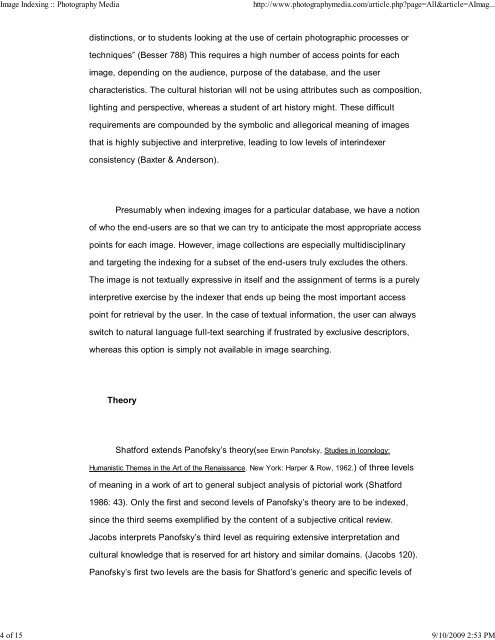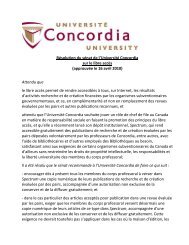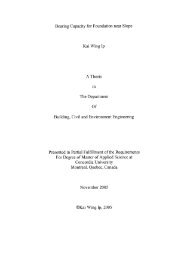Image Indexing - Spectrum: Concordia University Research ...
Image Indexing - Spectrum: Concordia University Research ...
Image Indexing - Spectrum: Concordia University Research ...
Create successful ePaper yourself
Turn your PDF publications into a flip-book with our unique Google optimized e-Paper software.
<strong>Image</strong> <strong>Indexing</strong> :: Photography Media<br />
http://www.photographymedia.com/article.php?page=All&article=AImag...<br />
4 of 15 9/10/2009 2:53 PM<br />
distinctions, or to students looking at the use of certain photographic processes or<br />
techniques” (Besser 788) This requires a high number of access points for each<br />
image, depending on the audience, purpose of the database, and the user<br />
characteristics. The cultural historian will not be using attributes such as composition,<br />
lighting and perspective, whereas a student of art history might. These difficult<br />
requirements are compounded by the symbolic and allegorical meaning of images<br />
that is highly subjective and interpretive, leading to low levels of interindexer<br />
consistency (Baxter & Anderson).<br />
Presumably when indexing images for a particular database, we have a notion<br />
of who the end-users are so that we can try to anticipate the most appropriate access<br />
points for each image. However, image collections are especially multidisciplinary<br />
and targeting the indexing for a subset of the end-users truly excludes the others.<br />
The image is not textually expressive in itself and the assignment of terms is a purely<br />
interpretive exercise by the indexer that ends up being the most important access<br />
point for retrieval by the user. In the case of textual information, the user can always<br />
switch to natural language full-text searching if frustrated by exclusive descriptors,<br />
whereas this option is simply not available in image searching.<br />
Theory<br />
Shatford extends Panofsky’s theory(see Erwin Panofsky, Studies in Iconology:<br />
Humanistic Themes in the Art of the Renaissance. New York: Harper & Row, 1962.) of three levels<br />
of meaning in a work of art to general subject analysis of pictorial work (Shatford<br />
1986: 43). Only the first and second levels of Panofsky’s theory are to be indexed,<br />
since the third seems exemplified by the content of a subjective critical review.<br />
Jacobs interprets Panofsky’s third level as requiring extensive interpretation and<br />
cultural knowledge that is reserved for art history and similar domains. (Jacobs 120).<br />
Panofsky’s first two levels are the basis for Shatford’s generic and specific levels of







